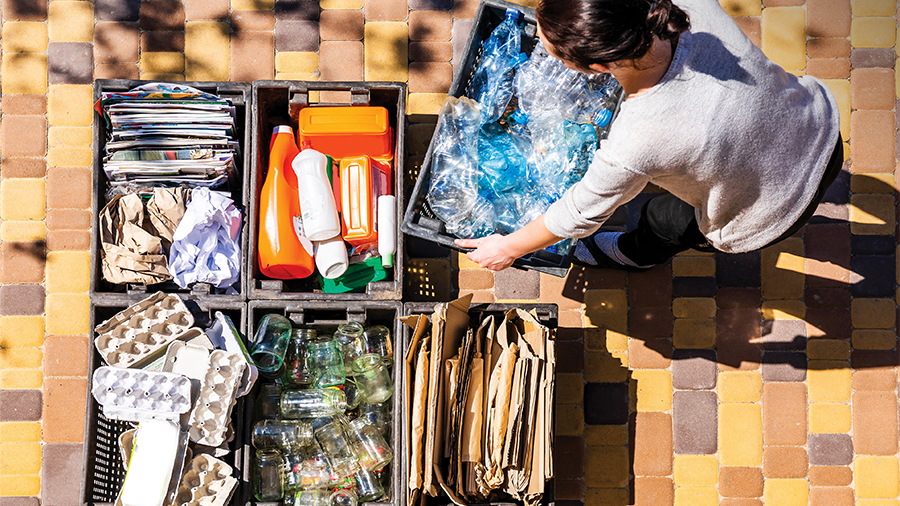Globally, levels of concern among consumers in response to the COVID-19 pandemic are moderating slightly, according to the seventh edition of the EY Future Consumer Index*. Thirty-nine percent of the 14,047 consumers surveyed believe the health crisis will continue to impact their lives for at least another 12 months, down from 40 percent in February 2021.
A key emerging trend is the prioritization of sustainability, which comes at a time when consumers are also re-evaluating other areas of their lives, including affordability. Most consumers (64 percent) said they plan to pay more attention to the environmental impact of what they consume, but 60 percent intend to focus more on value for money. This creates a tension over who should pay for sustainability.
Sustainability Gap Between Intention And Action
Overall, 64 percent of consumers said they would continue to spend more time at home than before the COVID-19 pandemic. Homes have become a hub from which consumers are working, ordering deliveries, exercising and staying entertained, presenting a huge opportunity for them to pivot to sustainable choices that positively impact the environment and society. Thirty-one percent of respondents said they now spend more on products that are sustainable and better for the environment, and 64 percent are prepared to purchase differently if it benefits society.
However, 78 percent of consumers remain concerned about the impact of the COVID-19 pandemic on their finances, and 53 percent said price is a more important purchase consideration than before the pandemic, threatening the longevity of positive attitudes toward sustainable behaviors.
Rather than make significant financial commitments toward helping achieve bigger societal goals around sustainability, many consumers said they are pursuing low-impact, no-cost actions that save them money, with over half of respondents (56 percent) saying they would mainly adopt sustainable behaviors if it saved money, notably in relation to key consumer household activities, including conserving energy use (85 percent), recycling or reusing packaging after use (83 percent) and bringing reusable shopping bags to the store (83 percent).
Who Pays For Sustainability?
This lack of financial commitment means that most consumers (68 percent) rely on companies to act as leaders in driving positive social and environmental outcomes.
Consumers believe that companies have the ability to make a bigger impact through market-transformative, sustainable-focused processes and innovation with 28 percent saying that they believe that large multinational corporations should reduce waste generated during production, and 25 percent believe companies should reduce greenhouse gas emissions.
The EY Future Consumer Index also found that there is a sustainability education gap among consumers with 61 percent saying they need more information to make better choices when shopping. This revealed an increased reliance and need for transparency from consumer products companies and retailers to lead and guide consumers in making sustainable choices. As a result, sustainable products and services face perception challenges with many consumers deterred by concerns around poor quality (67 percent) and high prices (66 percent), and lack of trust due to past “greenwashing,” and alleged deceptive marketing (60 percent).
Kristina Rogers, EY global consumer leader, said, “Companies need to guide consumers to help bridge the gap between action and intention. In order to do so profitably, they will have to change their mindsets, embrace sustainability to unlock value within their business and find new ways to collaborate with suppliers, peers, competitors, and consumers themselves. This will also require transforming to move with market disruption, adapt for the changing consumer and deliver a better future for people and the planet.”
Sustainability Perceptions Vary By Market
According to the Index, when asked which sustainability issues personally concern them most, there the survey found a disparity between consumer respondents worldwide with plastic waste the biggest concern in the U.S. (62 percent) and the UK (73 percent), air pollution is the top concern in China, and water pollution ranks highest in Brazil (93 percent). This indicates that there is no one-size-fits-all approach for companies and that they will need to consider regional nuances when looking to tackle sustainability issues.
*The EY Future Consumer Index tracks changing consumer sentiment and behaviors across time horizons and global markets, identifying the new consumer segments that are emerging. The Index provides regular longitudinal indicators and a unique perspective on which changes are temporary reactions to the COVID-19 pandemic, those which point to more fundamental shifts and what the consumer post-COVID-19 might be like. The seventh edition of the EY Future Consumer Index surveyed 14,047 consumers across the U.S., the UK, Canada, Brazil, France, Italy, Germany, Spain, Denmark, Sweden, Finland, Norway, India, UAE, Saudi Arabia, China, Indonesia, Japan, Australia, and New Zealand during the weeks of April 16 through May 10, 2021. To view the latest report, go here.
Photo courtesy EY













